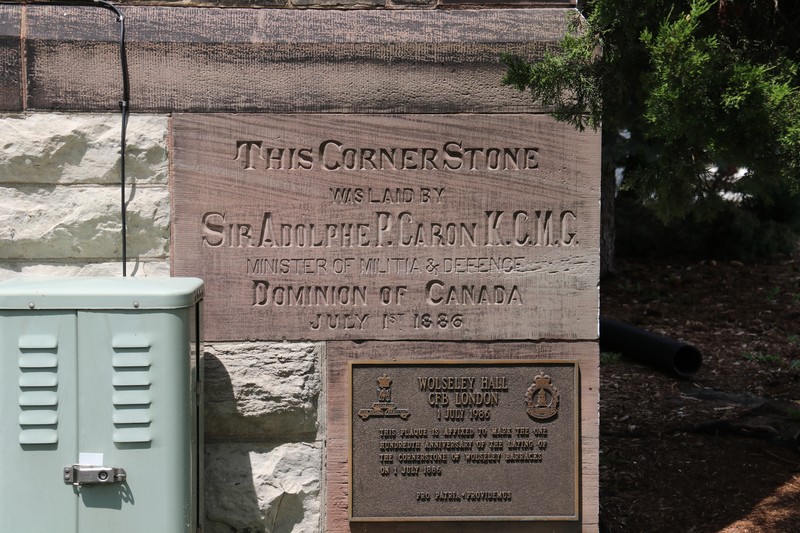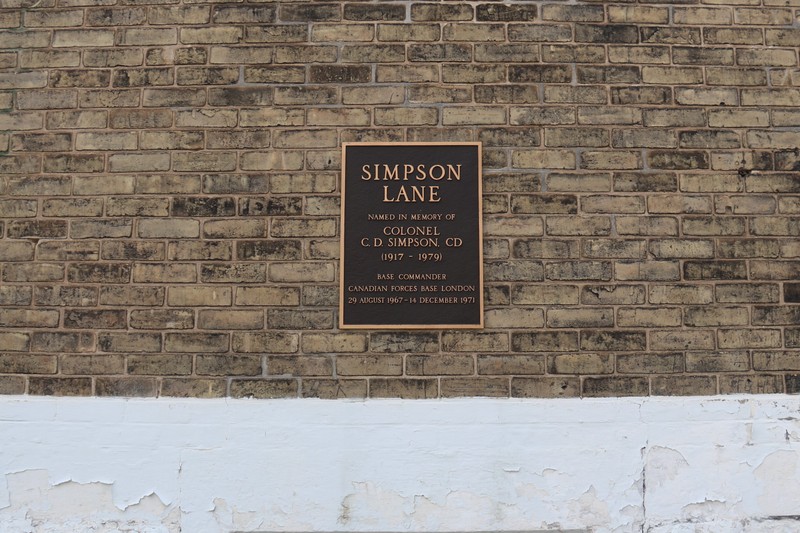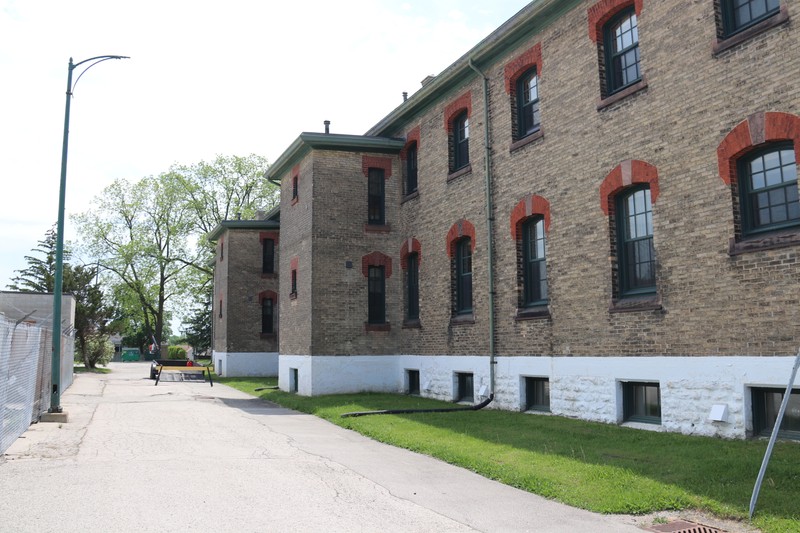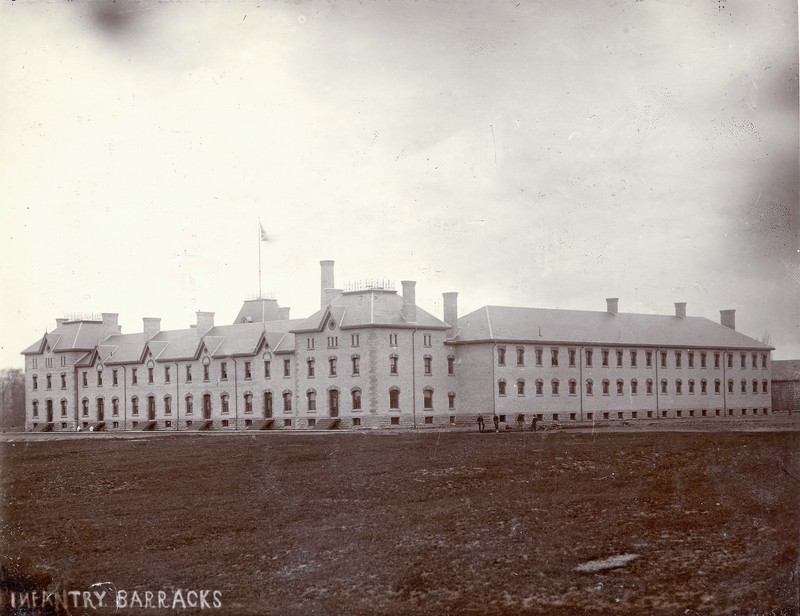Cornerstone, Wolseley Barracks
Introduction
Text-to-speech Audio
Images
Cornerstone of Wolseley Barracks

Simpson Lane Plaque

Side of East Wing Wolseley Barracks

Infantry Barracks, c. 1890

Backstory and Context
Text-to-speech Audio
On July 1, 1886, Sir Adolphe Caron, Minister of Militia and Defense attended the cornerstone ceremony for the Infantry School Building, which was built to house ‘D’ Company of the Infantry School Corps. While in London, he also inspected the troops training at Carling Heights. He was the Minister of Militia and Defense for 11 years. He oversaw the creation of the Infantry School Corps whose purpose was to provide training and education to officers for the volunteer militia.
The building was designed by the Engineering Branch of the Department of Militia and Defense. Henry James, the Chief Architect of the Militia Department, signed off on the design blueprints. The blueprints show a building with three wings, east, south, and west, connected at right angles with a parade square formed in the centre. Interesting features included a tower and an open archway through the west wing of the building (the current museum reception area). George F. Durand was the local architect who supervised the construction of the building. Mr. Durand was involved in the construction of a number of buildings in the London area including the Western Fair Grounds Main Exhibition Hall, and the London Club. Two million local yellow bricks produced by Walker Brothers were used for the construction of the building. It cost $77,300 dollars to build.
The original blueprints for Wolseley Barracks still exist, and are held by the archives at the University of Western Ontario. It is the oldest military building in Canada for which the original plans are known to still exist. Originally, the south wing of the building contained the officers’ quarters. The east wing contained the barracks rooms, kitchen, cellar, and dining room. The west wing contained quarters for non-commissioned officers, a kitchen, canteen, prisoner room, hospital, reading room, lecture hall, recreation room, and museum room.
Many changes would occur within this building overtime, but the outside remains remarkably similar to how it looked back in 1888. However, there have been some updates, such as the inclusion of two extensions on the exterior of the east wing, the removal of a boiler room at the south end of the parade square, the installation of higher windows on the west wing, and the closing of the open archway below the tower to form the new museum reception area.
Sources
1886, architectural drawings by Henry James, Archives and Research Collection Centre, Western University, London, ON, Durand-Moore Fond.
O'Leary, Michael. "Constructing Wolseley Hall", Regimental Rogue. Accessed June 23rd 2020. http://www.regimentalrogue.com/blog/index.blog/2356850/constructing-wolseley-hall/.
"George F. Durand", Biographical Dictionary of Architects in Canada 1850-1950. Accessed June 23rd 2020. http://dictionaryofarchitectsincanada.org/node/1653 .
Serge Bernier and Pauline Dumont-Bayliss, “CARON, Sir ADOLPHE-PHILIPPE,” Dictionary of Canadian Biography, vol. 13, University of Toronto/Université Laval, 2003–, accessed June 23, 2020, http://www.biographi.ca/en/bio/caron_adolphe_philippe_13E.html.
Stanciu, Georgiana. “The ‘Museum Room’ at the Infantry School Corps building in London, Ontario. The story behind the Royal Canadian Regiment” Museum ICOMAM Magazine. Museum ICOMAM Magazine. January 12th 2018. 39 - 44. Accessed June 23rd 2020 https://drive.google.com/file/d/1_LLWy4oMYRB5ddwJ32KsCjyh_yJcbu1H/view
"The Death of Mr. Geo. F. Durand." The Canadian Architect and Builder January 1890. p.4. Accessed June 23rd 2020. http://www.canadiana.ca/view/oocihm.8_06627_25/12?r=0&s=3
Ware, Francis B. "The Old Barracks." in The Regimental Rogue, edited by Michael O'Leary. Accessed June 23rd 2020. http://www.regimentalrogue.com/blog/index.blog/2359257/wolseley-barracks/.
The RCR Museum Photograph
The RCR Museum Photograph
The RCR Museum Photograph
The RCRM Collection
